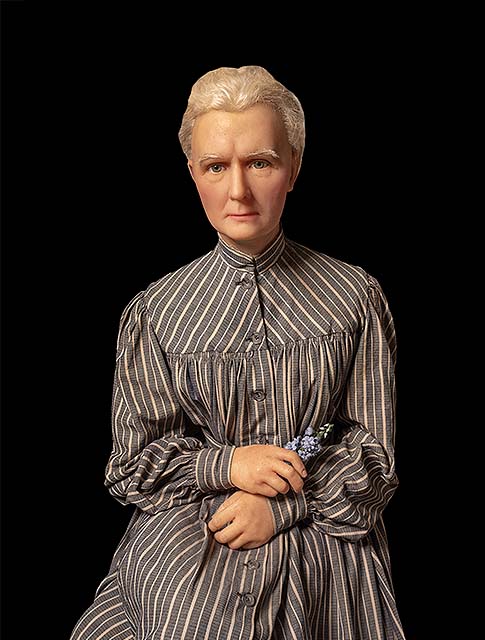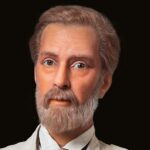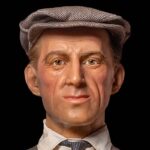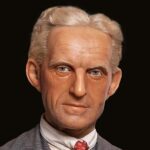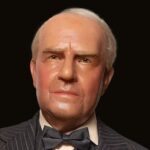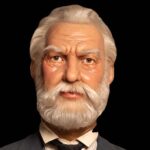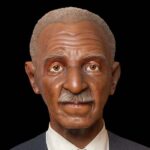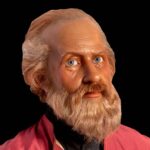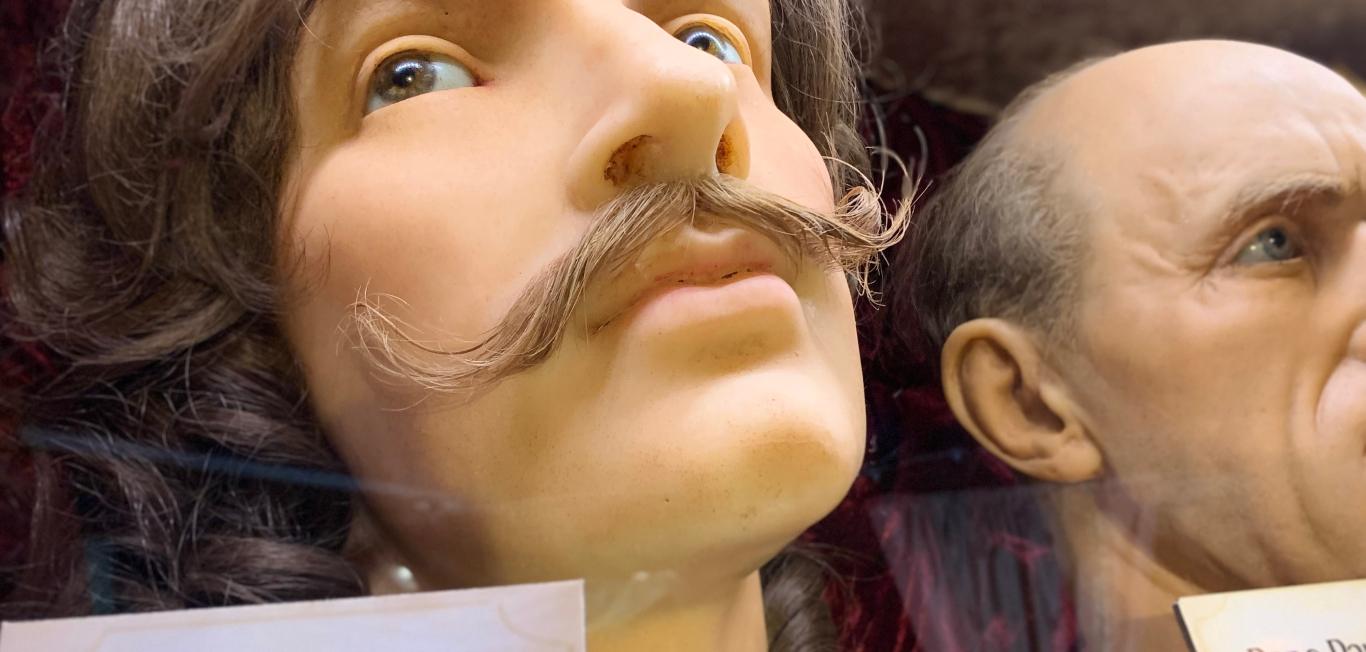History of Marie Curie
On November 7, 1867, Marie Salomea Skłodowska–Curie was born. She would later be known as Marie Curie. She was born in the Kingdom of Poland, later a part of the Russian Empire. Her family endured hardships as a result of the oppressive Tsarist regime’s efforts to eradicate Polish cultural remnants. She is renowned in history as a physicist and chemist who studied radioactivity.
According to Marie Curie’s history, she pioneered fresh disciplines in science, engineering, and medicine. History remembers Marie Curie as a leader in women’s science, which has given her a good reputation throughout time. In order to organize fleets of radiography cars to provide portable X-ray equipment to injured soldiers on the front lines during World War I, Marie Curie used her scientific expertise. Thousands of researchers are now building on her radiation research in disciplines such as cancer therapy, archaeology, and astronomy.
Young
Marie Curie
The fifth and youngest child of well-known educators Bronisława, née Boguska, and Władysław Skłodowski, Marie Curie was born in 1867. Maria’s (also known as Mania) older siblings were Zofia, Józef, Bronisława, and Helena.
DID YOU KNOW?
Marie Curie was the fifth and youngest child of well-known educators.
The family had suffered losses in both the maternal and paternal lineages due to patriotic participation in Polish national uprisings intended to restore Poland’s freedom, the most recent of which had been the January Uprising of 1863-65. This doomed the next generation, which included Maria and her older siblings, to a difficult battle to succeed in life. Bolesław Prus, a prominent character in Polish literature, attended the Lublin elementary school that Józef Skłodowski, Maria’s paternal grandpa, served as principal of.
Maria’s mother was a devoted Catholic, but her father was an atheist. Maria abandoned her Catholicism and converted to agnosticism as a result of the passings of her mother and sister.
Early Career and Discoveries
Marie Curie started her practical scientific studies in Warsaw, where she attended the hidden Flying University. She accompanied her older sister Bronisława to the Sorbonne, the University in Paris, in 1891 at the age of 24, where they both pursued advanced degrees and, later, scientific research. The Russian government forbade women from studying at universities everywhere in its empire; therefore, Curie and her sister were unable to attend the University of Warsaw like their brother had.
Marie wed French scientist Pierre Curie in 1895. Following the 1896 finding by Henri Becquerel that uranium salts periodically release an X-ray-dissimilar penetrating radiation that may be recorded on a photographic plate, Marie Curie made the decision to see if the characteristic identified in uranium might also exist in other materials. She and Gerhard Carl Schmidt both determined that this was accurate for thorium. Curie’s interest was piqued by pitchblende when she turned her focus to minerals. The only explanation for pitchblende, a mineral with activity higher than pure uranium, was that very tiny portions of an unidentified material with extremely high activity were present in the ore.
Pierre soon joined Marie’s efforts to address the issue, and as a result, polonium and radium were discovered. Pierre focused primarily on researching the new radiation’s physical properties. Marie achieved the complete isolation of a tenth of a gram of barium-free radium chloride in 1902. The significance of this work was quickly acknowledged by scientists. Together with physicist Henri Becquerel, Marie and Pierre received the 1903 Nobel Prize in Physics for their groundbreaking work creating the notion of “radioactivity,” a term Marie invented herself. A few years after this, Pierre Curie died in a horrific accident in 1906. It wasn’t until 1910 that Marie and scientist André-Louis Debierne, one of Pierre’s students, extracted pure radium alone. Pure radium was found to have radioactivity that was more than a million times greater than either uranium or thorium.
DID YOU KNOW?
Together with physicist Henri Becquerel, Marie and Pierre Curie received the 1903 Nobel Prize in Physics for their groundbreaking work creating the notion of "radioactivity," a term Marie invented herself.
World War I
Marie Curie had devoted her professional career to advancing knowledge in science. But when World War I broke out in 1914, Curie recognized that X-ray technology may be crucial in the treatment of injured soldiers. She obtained money throughout the course of the war to build a fleet of mobile radiography labs that could deliver X-ray equipment to the front lines of combat. Soldiers who had been hurt were examined and treated by doctors using X-ray equipment. These radiography vehicles were known to French soldiers as “petites Curies,” or small Curies. Marie demanded on operating one of the radiography vehicles as well. She learned how to drive and do simple vehicle repairs on her own. She studied X-ray equipment and human anatomy, then shared her knowledge with others. She then drove to the front lines of combat with her daughter Irène to assist in X-raying injured combatants.
Interesting Facts
After her husband Pierre passed away, Marie Curie took a position as a professor of physics at the Sorbonne. She was the first woman to hold this post.
Marie Curie launched the Curie Institute in Paris in 1921, and it is still a significant site for cancer research today.
Irène, the first daughter of Marie and Pierre Curie, won the Nobel Prize in Chemistry for her research and findings on aluminum and radiation.
Curie’s second daughter Ève wrote a biography of her mother.
Curie’s research ultimately led to her death due to constant exposure to radioactivity.
The Panthéon in Paris holds the remains of Marie and Pierre Curie.
Impact/Influence on History
Marie Curie was the first woman in history to receive a Nobel Prize, the first person to do it twice, and the only one who won them in two different fields of science. She shared her first Nobel Prize with her husband, Pierre Curie, making them the first married couple to ever receive the award. Together, the two and their families received five Nobel Prizes. Marie Curie also made history by becoming the first female professor at the University of Paris in 1906.
Later, Curie discovered the elements polonium and radium, which earned her the 1911 Nobel Prize in Chemistry. She isolated radioactive isotopes using methods she developed. The first research into using radioactive isotopes to treat neoplasms was carried out globally under her guidance. She established two important medical research institutions: the Curie Institute in Paris in 1920 and the Curie Institute in Warsaw in 1932. Marie Curie is also known in history for creating mobile radiography devices to offer X-ray services to field hospitals during World War I.
Due to her unwavering commitment and voracious curiosity, Marie Curie became a public figure in the field of modern science. She discovered polonium and radium, promoted the use of radiation in medicine, and radically altered the world’s understanding of radioactivity as she endured a career of rigorous and eventually deadly labor.
DID YOU KNOW?
Curie discovered polonium and radium.
Late in Life
Marie Skłodowska–Curie was a French citizen but never lost sight of her Polish heritage. She used both of her names all throughout her life, and brought her girls on trips to Poland while teaching them the Polish language. She gave her home nation, Poland, the name of the first element she discovered “olonium.”
Marie Curie eventually developed leukemia. At the age of 66, she passed away in 1934 at the Sancellemoz sanitarium in France, from aplastic anemia. Her cause of death was most likely a result of radiation exposure caused by her research and her radiological efforts in military hospitals during World War I. In addition to her Nobel Prizes, Marie Curie won countless other awards and honors. Poland proclaimed 2011 the Year of Marie Curie during the International Year of Chemistry. She made history in 1995 when she became the first woman to have her ashes interred in the Paris Panthéon as a result of her own accomplishments. Marie Curie has been the topic of many biographies thanks to her mark on scientific history.
FAQs
What did Marie Curie accomplish?
She changed science: she created portable X-ray machines, advancing technology during World War I. She was a two-time Nobel Prize winner. Her findings still affect modern medical care and science today.
What awards did Marie Curie win?
Marie Curie won the Nobel Prize for Physics in 1903 alongside colleague Henri Becquerel and her husband, Pierre Curie. In 1911, Marie was the only individual to be awarded a Nobel Prize in Chemistry.
Why was Marie Curie important?
In 1898, Marie Curie and her husband Pierre Curie made the discoveries of polonium and radium. Together they discovered radioactivity. Later, Marie succeeded in isolating pure radium. She first worked on X-rays during World War I before studying radioactive materials and their uses in medicine.
What did Marie Curie invent?
During World War I, Marie Curie invented portable X-ray equipment. She pioneered the use of radiation treatment, which shrinks tumors and kills cancer cells.
What did Marie Curie’s discoveries lead to?
Two new elements, polonium and radium, as well as the development of radiation therapy as a cancer treatment, were two of the numerous achievements made possible by Marie Curie’s discoveries. Her innovations, such as the portable X-ray machine, advanced science and medicine.
